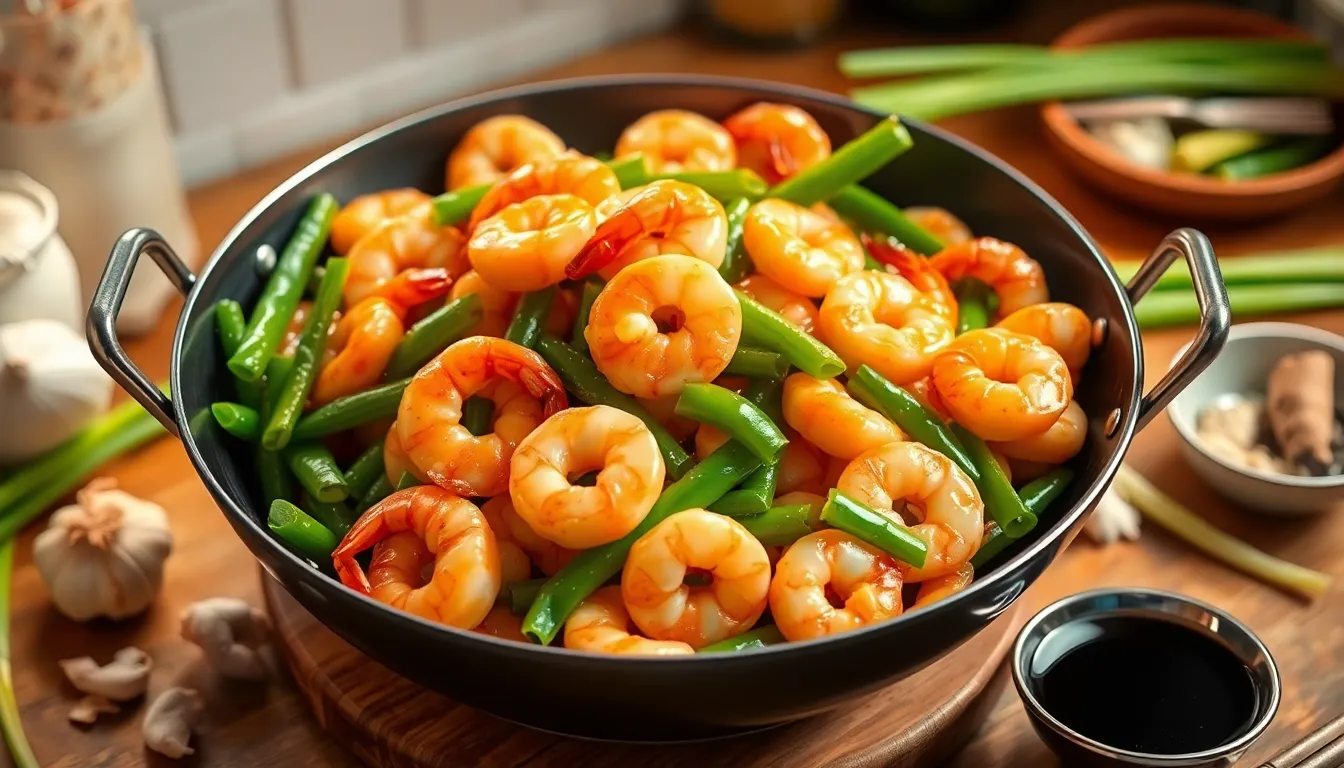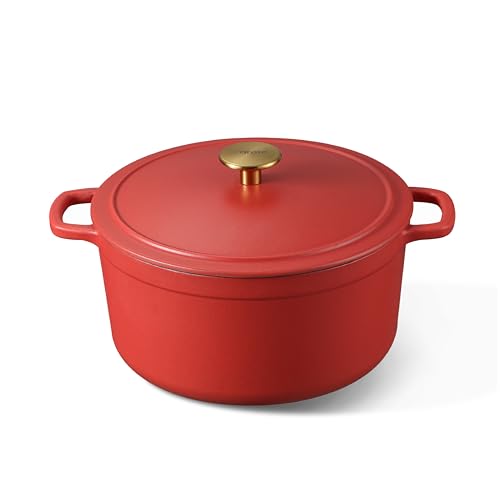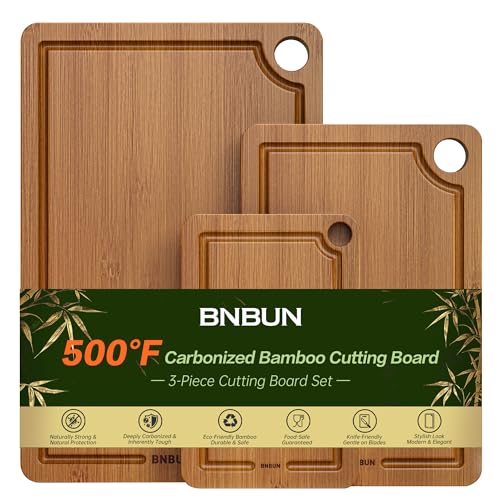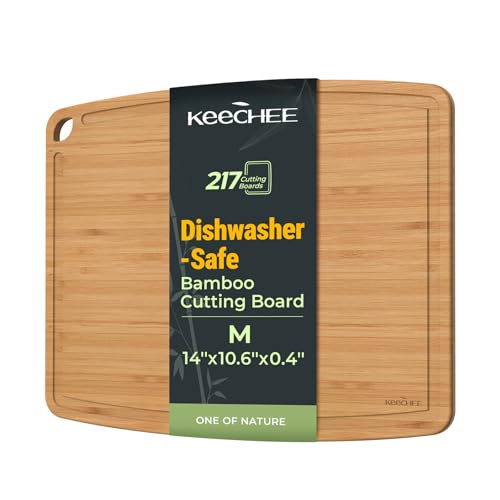Ingredients
You’ll need just a handful of fresh ingredients to create this vibrant stir fry. Each component plays a crucial role in delivering the perfect balance of flavors and textures.
For the Shrimp
- 1 pound large shrimp, peeled and deveined
- 1 tablespoon cornstarch
- 1/2 teaspoon salt
- 1/4 teaspoon black pepper
- 1 tablespoon vegetable oil
For the Vegetables
- 1 pound fresh sugar snap peas, trimmed
- 3 cloves garlic, minced
- 1 tablespoon fresh ginger, grated
- 3 green onions, sliced diagonally
- 2 tablespoons vegetable oil
- 1 tablespoon sesame seeds for garnish
For the Stir Fry Sauce
- 3 tablespoons low sodium soy sauce
- 2 tablespoons oyster sauce
- 1 tablespoon rice vinegar
- 1 teaspoon sesame oil
- 1 teaspoon honey
- 1/4 teaspoon red pepper flakes
- 2 tablespoons chicken broth
Equipment Needed
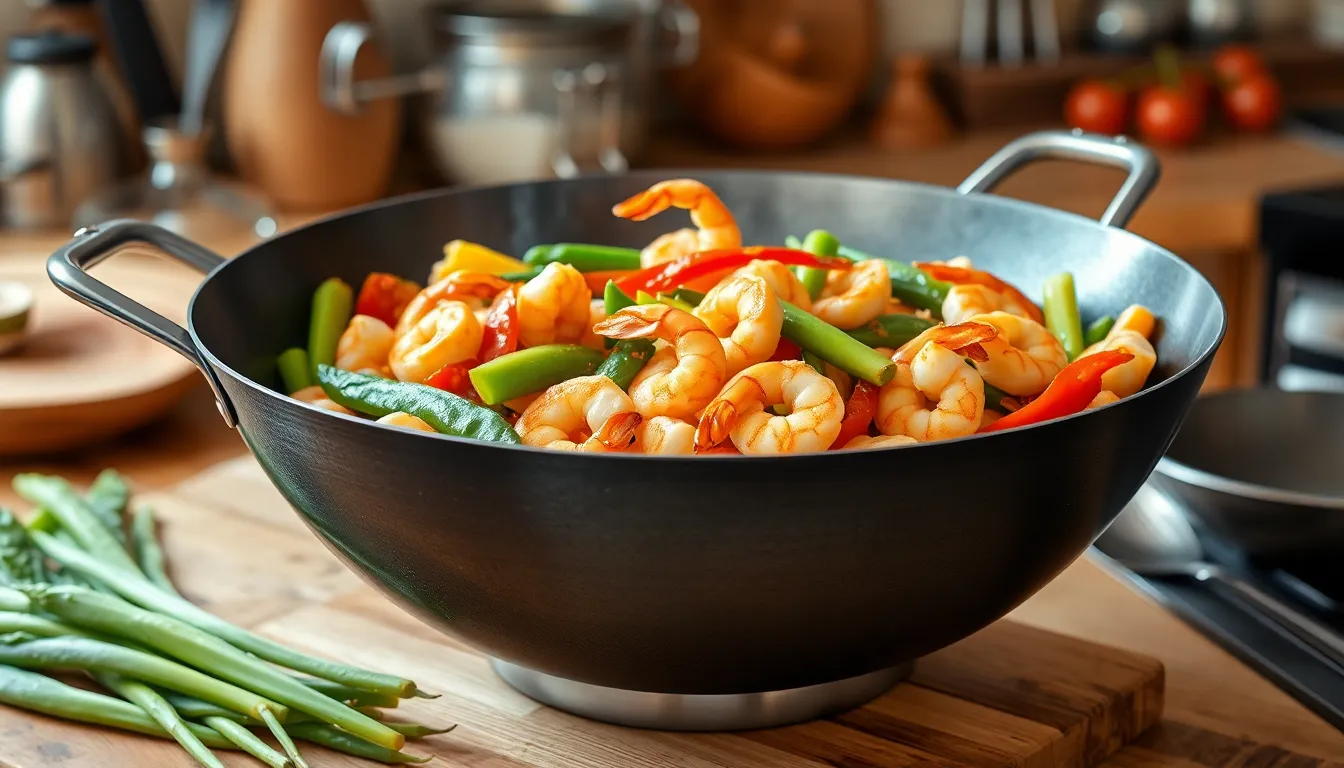
Your kitchen setup plays a crucial role in achieving the perfect shrimp stir fry with sugar snap peas. A large wok or heavy-bottomed skillet serves as your primary cooking vessel for this recipe. The wide surface area allows ingredients to cook quickly while maintaining their crisp texture.
Essential Cookware:
- Large wok or 12-inch skillet with high sides
- Medium mixing bowl for marinating shrimp
- Small bowl for sauce preparation
- Sharp chef’s knife for ingredient prep
- Cutting board (preferably separate for proteins and vegetables)
Cooking Tools:
- Wooden spoon or wok spatula for stirring
- Measuring cups and spoons for accurate portioning
- Fine-mesh strainer for rinsing shrimp
- Paper towels for patting ingredients dry
Your wok should heat evenly and retain high temperatures throughout the cooking process. Cast iron or carbon steel woks work exceptionally well for achieving the signature “wok hei” flavor that makes restaurant-style stir fries so appealing.
A wooden spatula prevents scratching your cookware while providing the control needed for constant stirring. The flat edge helps you scrape up any caramelized bits that develop during cooking.
Having all equipment ready before you begin cooking ensures smooth execution of this fast-paced recipe. Your ingredients will spend only minutes in the pan so proper preparation tools make the difference between success and overcooking.
Prep Work
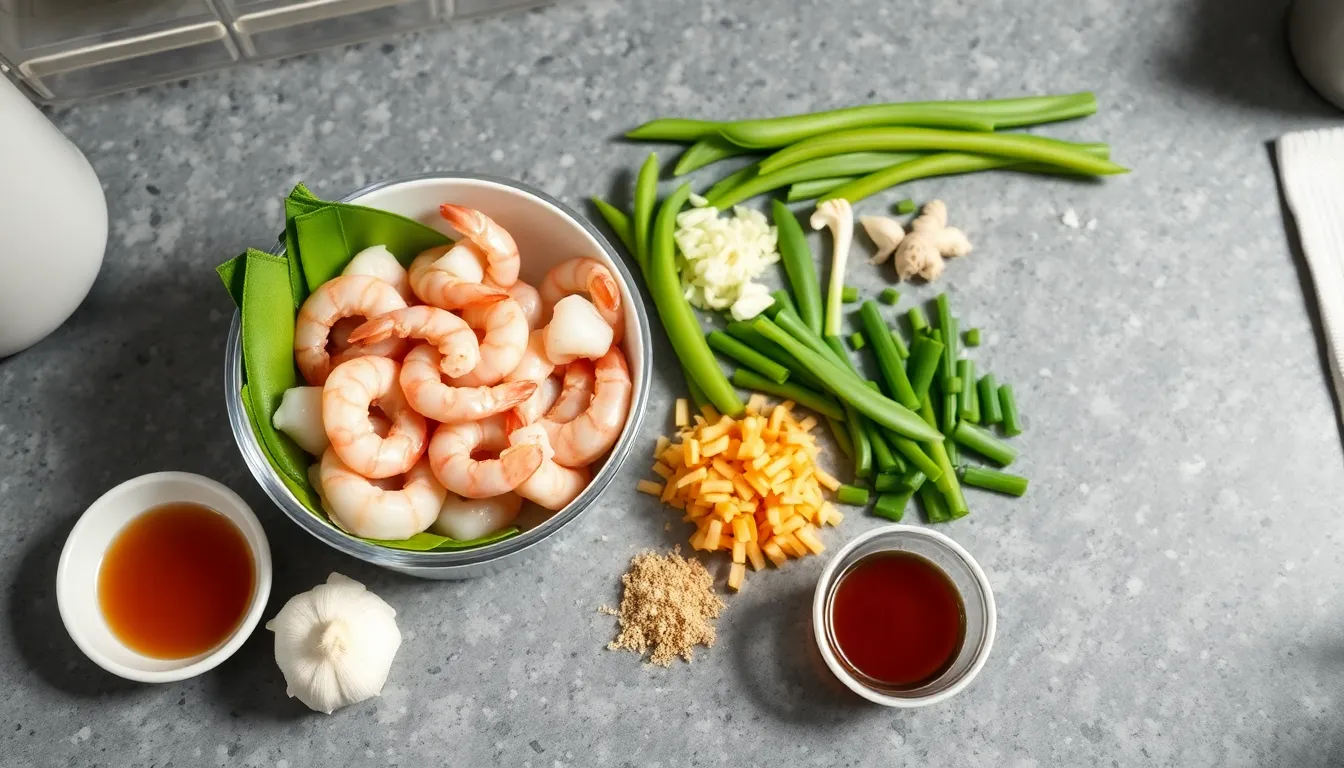
Proper preparation ensures your shrimp stir fry comes together seamlessly during the fast-paced cooking process. Having all ingredients prepped and ready before you start cooking prevents overcooking and maintains the vibrant textures that make this dish exceptional.
Preparing the Shrimp
Remove the shells and devein your shrimp if using raw shrimp. Pat each piece completely dry with paper towels to prevent excess moisture during cooking. Place the cleaned shrimp in your medium mixing bowl and sprinkle with the cornstarch coating ingredients.
Toss the shrimp gently with 1 tablespoon cornstarch until each piece is lightly coated. Season with 1/2 teaspoon salt and 1/4 teaspoon black pepper. Mix thoroughly to distribute the seasoning evenly across all shrimp. Set the seasoned shrimp aside while you prepare the remaining ingredients.
Preparing the Vegetables
Trim the ends from your sugar snap peas and remove any tough strings along the edges. Rinse the peas under cold water and pat them dry with a clean kitchen towel. Keep the peas whole for the best texture and visual appeal in your finished dish.
Peel and mince 3 cloves of fresh garlic using your sharp chef’s knife. Peel a 1-inch piece of fresh ginger and grate it finely using a microplane or the small holes of a box grater. Slice 3 green onions diagonally into 1/2-inch pieces, separating the white and light green parts from the dark green tops.
Making the Sauce
Combine all sauce ingredients in a small bowl before you begin cooking. Whisk together 3 tablespoons low sodium soy sauce, 2 tablespoons oyster sauce, and 1 tablespoon rice vinegar until smooth. Add 1 teaspoon sesame oil, 1 teaspoon honey, and 1/4 teaspoon red pepper flakes to the mixture.
Pour in 2 tablespoons chicken broth and whisk the sauce until the honey dissolves completely. Taste the sauce and adjust seasoning if needed. Keep the finished sauce near your cooking area so you can add it quickly during the stir frying process.
Instructions
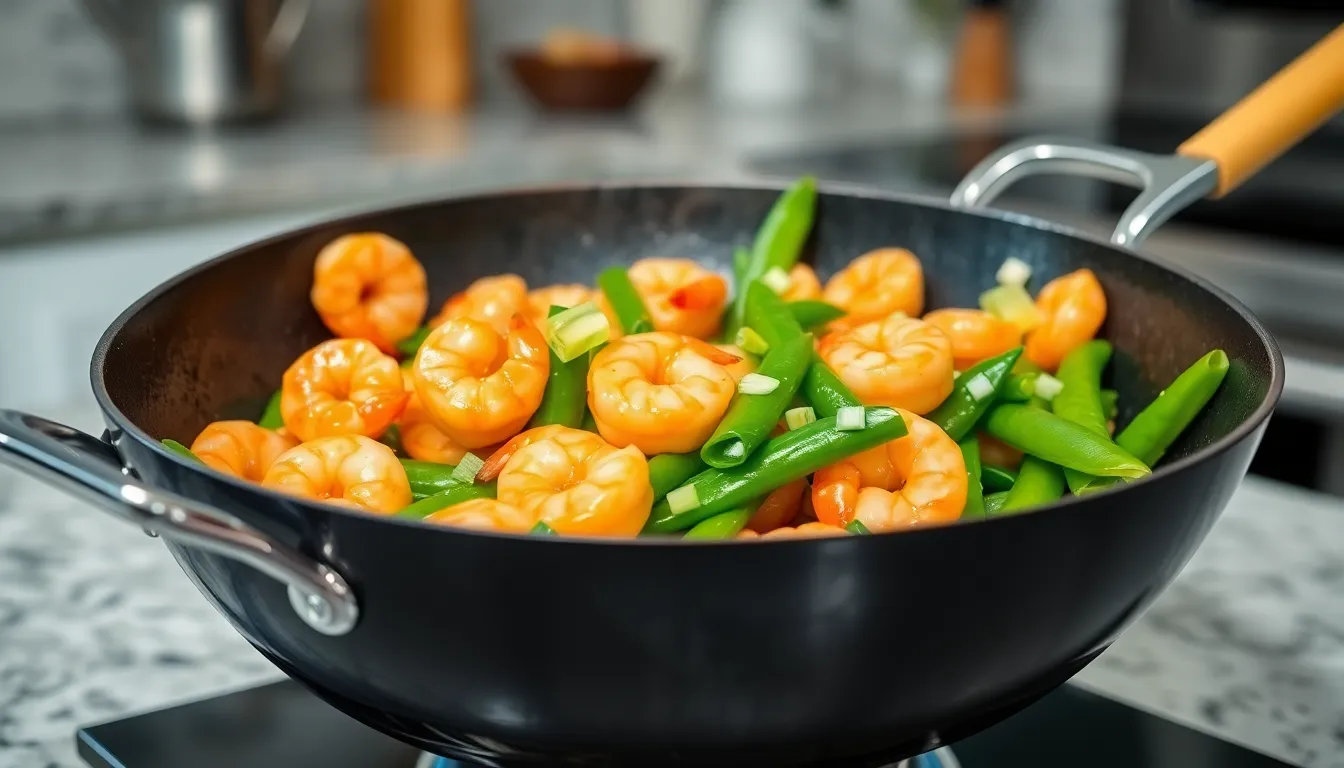
Follow these simple steps to create your perfect shrimp stir fry with sugar snap peas. The entire cooking process takes only 10 minutes once you begin.
Step 1: Heat the Wok
Place your wok or large skillet over high heat and let it warm for 2 minutes until smoking hot. Add 1 tablespoon of vegetable oil and swirl to coat the entire surface. The oil should shimmer and move freely when the pan reaches the correct temperature. Watch for light smoke rising from the oil as your signal to proceed to the next step.
Step 2: Cook the Shrimp
Add your seasoned shrimp to the hot wok in a single layer without overcrowding. Cook for 90 seconds without stirring to achieve a golden sear on the bottom. Flip each shrimp using your wok spatula and cook for another 60 seconds until the shrimp turn pink and opaque throughout. Transfer the cooked shrimp to a clean plate and set aside immediately to prevent overcooking.
Step 3: Stir Fry the Vegetables
Pour the remaining 1 tablespoon of oil into the same wok and add your minced garlic and ginger. Stir constantly for 30 seconds until fragrant and golden. Toss in the sugar snap peas and stir fry for 2 minutes until they turn bright green and remain crisp-tender. The peas should still have a satisfying crunch when you bite into them.
Step 4: Combine and Finish
Return the cooked shrimp to the wok with the vegetables and pour your prepared sauce over everything. Stir everything together vigorously for 1 minute until the sauce coats all ingredients evenly and begins to thicken slightly. Remove from heat and sprinkle the sliced green onions over the top before serving immediately over steamed rice.
Serving Suggestions
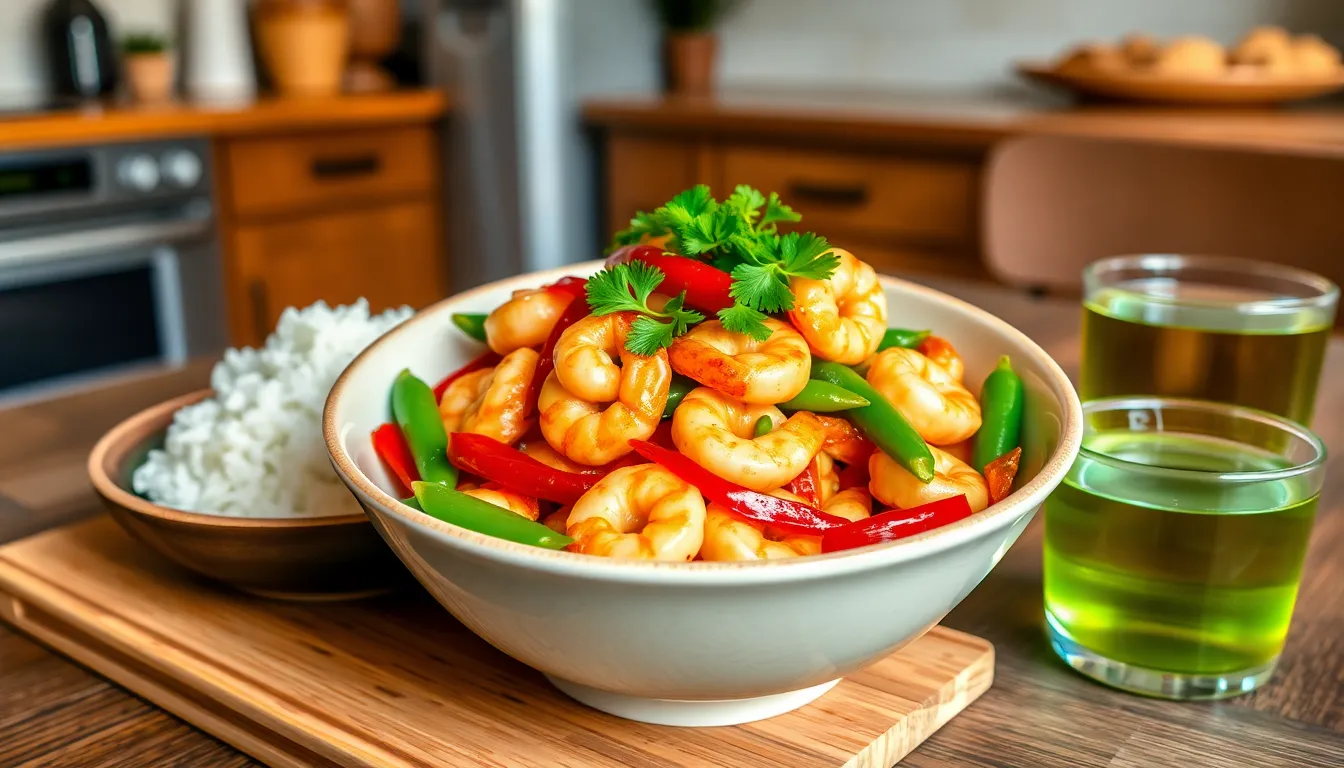
Your shrimp stir fry with sugar snap peas pairs beautifully with fluffy jasmine rice that absorbs the savory sauce perfectly. Steamed brown rice offers a nutty flavor and additional fiber that complements the dish’s fresh vegetables. You can also serve this stir fry over cauliflower rice for a low-carb alternative that maintains the meal’s vibrant flavors.
Fresh noodles create another excellent foundation for your stir fry. Lo mein noodles provide a satisfying chewiness that works well with the tender shrimp and crisp peas. Rice noodles offer a lighter texture while still soaking up the garlic-ginger sauce effectively.
Garnish your finished dish with toasted sesame seeds for added crunch and nutty flavor. Fresh cilantro leaves brighten the overall taste profile and add visual appeal to your presentation. Sliced green onions provide a mild onion flavor and attractive color contrast.
Side dishes enhance the complete meal experience. Crispy spring rolls offer textural variety and additional vegetables to your dinner table. Steamed edamame provides protein and fiber while maintaining the Asian-inspired theme. Hot and sour soup creates a warming starter that prepares your palate for the main course.
Beverage pairings complement the stir fry’s bold flavors. Green tea cleanses the palate between bites and aids digestion. Light white wines like Pinot Grigio or Sauvignon Blanc balance the dish’s umami richness without overwhelming the delicate shrimp. Sparkling water with lime provides a refreshing contrast to the savory sauce.
Temperature considerations affect your serving success. Serve the stir fry immediately while the vegetables retain their crisp texture and the sauce remains glossy. Warm your serving plates beforehand to keep the dish at optimal temperature throughout the meal.
Storage and Reheating
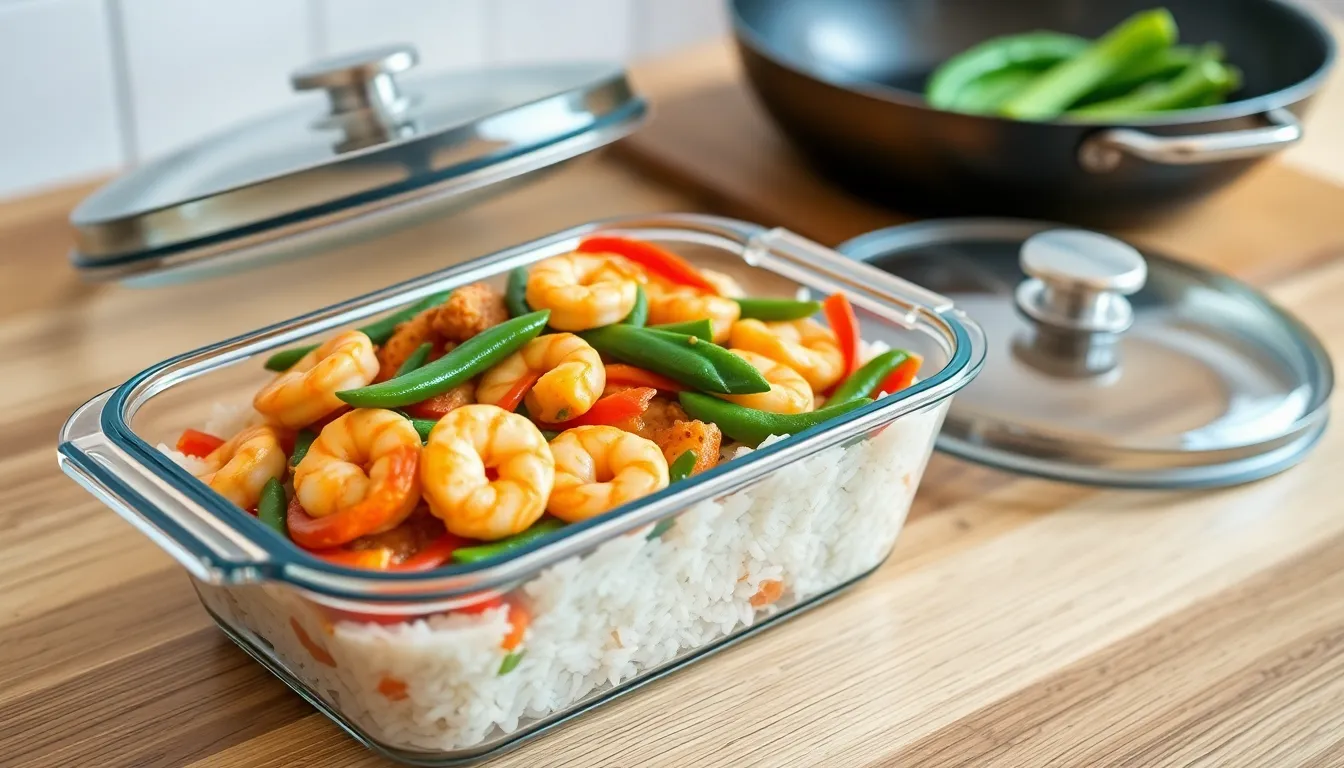
Store your leftover shrimp stir fry with sugar snap peas in the refrigerator for up to 3 days in an airtight container. You should allow the dish to cool completely before transferring it to storage to prevent condensation buildup. The sugar snap peas will lose some of their crisp texture during storage but still maintain good flavor and nutritional value.
Separate the rice from the stir fry when storing to prevent the grains from becoming mushy. Place each component in its own airtight container to maintain optimal texture and freshness. Your stored stir fry will develop deeper flavors as the ingredients meld together overnight.
Reheat the stir fry using a large skillet or wok over medium heat for the best results. Add a tablespoon of water or chicken broth to create steam and prevent the dish from drying out. Stir frequently for 3 to 4 minutes until heated through and the sauce begins to glisten again.
Microwave reheating works for quick meals but may result in slightly softer vegetables. Place the stir fry in a microwave-safe dish and cover with a damp paper towel. Heat in 30-second intervals, stirring between each interval, until warmed completely.
| Storage Method | Duration | Temperature |
|---|---|---|
| Refrigerator | 3 days | 40°F or below |
| Freezer | Not recommended | N/A |
Avoid freezing this shrimp stir fry as the seafood and vegetables will become watery and lose their appealing texture when thawed. Fresh preparation yields the best results for both flavor and presentation. You can prep ingredients ahead of time and store them separately for quick assembly when ready to cook.
Recipe Variations
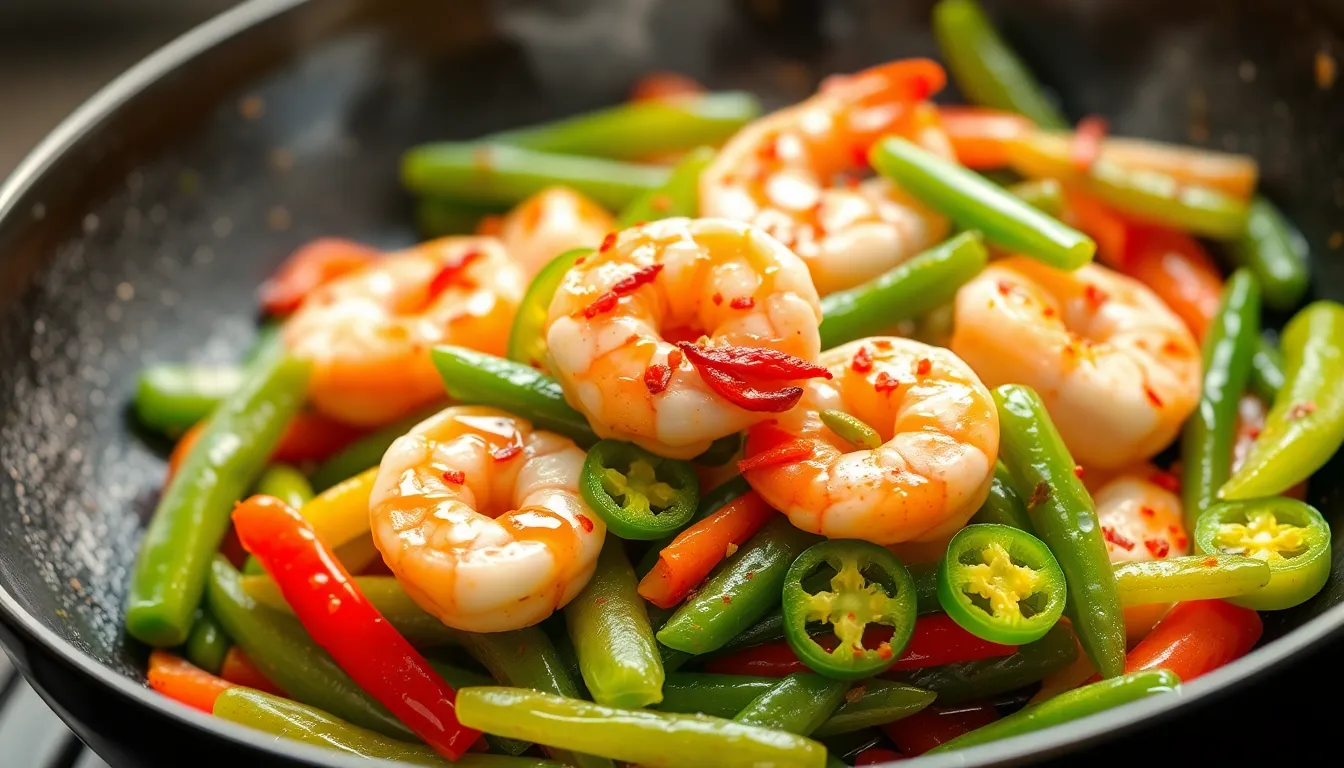
Transform your basic shrimp stir fry into exciting new dishes with these simple modifications. Each variation maintains the core cooking technique while introducing different flavors and ingredients to keep your meals interesting.
Spicy Shrimp Stir Fry
Amp up the heat by doubling the red pepper flakes in your sauce to 1/2 teaspoon. Add 1 tablespoon of sriracha or chili garlic sauce to the stir fry sauce mixture for a bold kick. Incorporate 1 sliced jalapeño pepper along with the garlic and ginger during the aromatics stage. Fresh Thai chilies work beautifully if you prefer an authentic Asian heat level. Garnish your finished dish with extra red pepper flakes and a drizzle of chili oil for maximum impact.
Protein Substitutions
Replace the shrimp with 1 pound of bite-sized chicken breast pieces for a classic poultry version. Season the chicken with the same cornstarch mixture and cook for 5-6 minutes until golden and cooked through. Firm tofu cubes make an excellent vegetarian alternative when pressed and cubed into 1-inch pieces. Beef sirloin strips create a heartier variation when sliced thin against the grain and cooked for 3-4 minutes. Scallops offer another seafood option that pairs wonderfully with sugar snap peas when seared for 2-3 minutes per side. Each protein requires slightly different cooking times but follows the same basic stir fry method for consistent results.
Tips for Perfect Shrimp Stir Fry
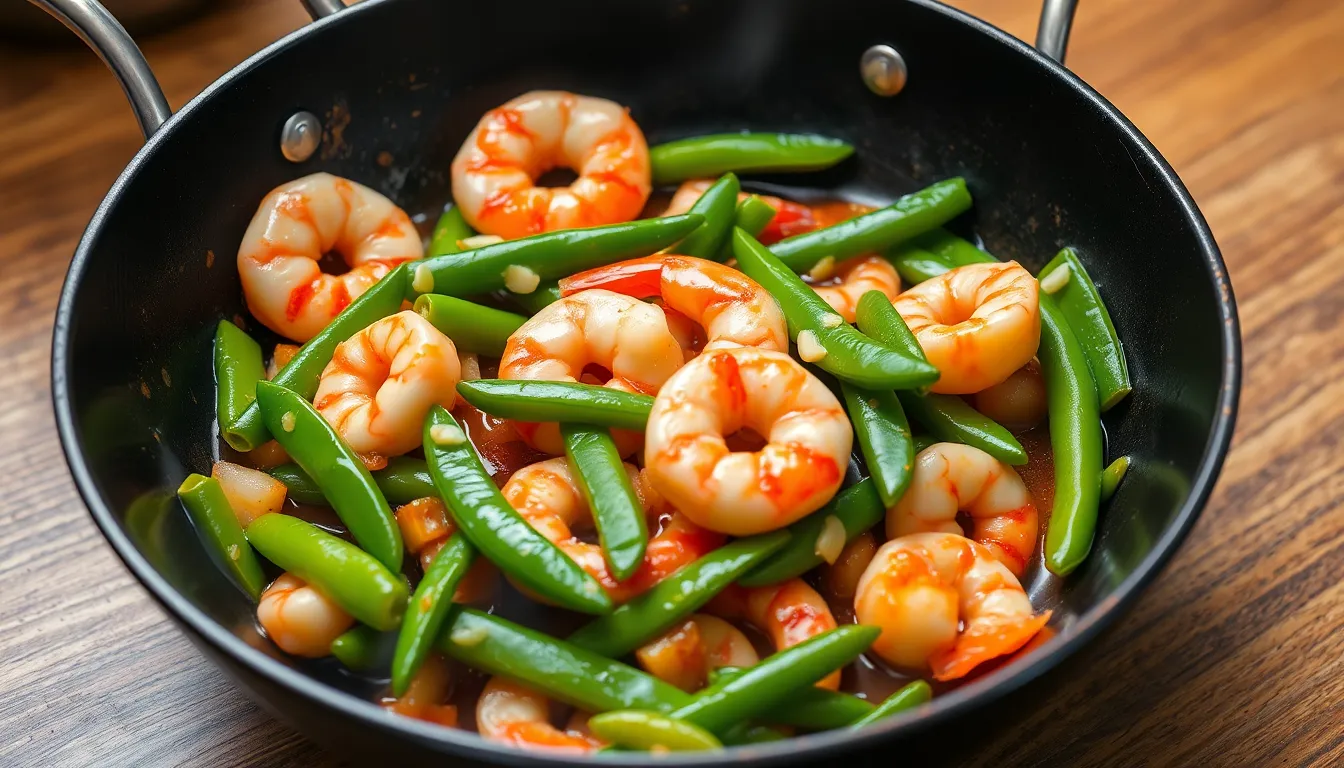
Master High Heat Cooking
Your stir fry success depends on maintaining high heat throughout the cooking process. Heat your wok or skillet until it nearly smokes before adding oil. The hot surface creates the perfect sear on shrimp while keeping vegetables crisp. Avoid overcrowding the pan, which drops the temperature and creates steam instead of the desired sear.
Choose the Right Shrimp Size
Large shrimp (21-25 count per pound) work best for stir frying because they won’t overcook as quickly as smaller varieties. Pat shrimp completely dry before seasoning to prevent excess moisture from steaming the protein. Remove tails for easier eating, though leaving them on adds visual appeal if you prefer presentation over convenience.
Perfect Your Timing
Prepare all ingredients before you start cooking since stir frying happens quickly. Shrimp cook in just 2-3 minutes per side, while sugar snap peas need only 1-2 minutes to reach crisp-tender perfection. Add aromatics like garlic and ginger first to release their flavors, followed by vegetables, then return shrimp to the pan for final coating with sauce.
Keep Sugar Snap Peas Crispy
Trim sugar snap peas just before cooking to maintain maximum freshness and crunch. Cook them only until they turn bright green and remain crisp to the bite. Overcooking transforms their satisfying snap into mushy texture that diminishes the dish’s overall appeal.
Control Your Sauce Consistency
Mix your stir fry sauce thoroughly before adding it to the hot pan to prevent cornstarch from clumping. Pour the sauce around the edges of the pan rather than directly onto the ingredients to help it heat evenly. The sauce should coat ingredients with a glossy finish without pooling at the bottom of the pan.
Prevent Shrimp from Becoming Rubbery
Season shrimp with cornstarch, salt, and pepper at least 10 minutes before cooking to allow proper flavor absorption. Cook shrimp until they just turn pink and curl slightly. Overcooked shrimp become tough and chewy, so remove them from heat as soon as they’re opaque throughout.
Use Fresh Aromatics
Mince garlic and ginger just before cooking to preserve their potent flavors. Fresh aromatics provide more vibrant taste than pre-prepared versions. Add them to the hot oil for only 30 seconds to release their essence without burning, which creates bitter flavors.
Serve Immediately
Transfer your completed stir fry to warmed plates or bowls to maintain optimal temperature. The dish tastes best when vegetables retain their crisp texture and the sauce maintains its glossy appearance. Garnish with fresh elements like green onions or sesame seeds just before serving for added color and flavor contrast.
Conclusion
You’ve now got everything you need to create this restaurant-quality shrimp stir fry right in your own kitchen. The combination of succulent shrimp and crisp sugar snap peas delivers both incredible flavor and impressive nutrition in just minutes.
This versatile recipe adapts beautifully to your preferences and dietary needs. Whether you’re cooking for a busy weeknight or entertaining guests you’ll consistently achieve professional results with these proven techniques.
The key to mastering this dish lies in your preparation and timing. Keep your heat high maintain crisp textures and serve immediately for the best dining experience. Your family and friends will be amazed at how such simple ingredients can create such an extraordinary meal.

